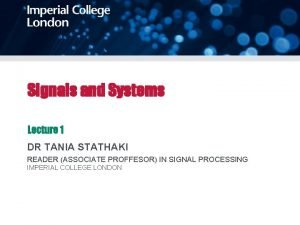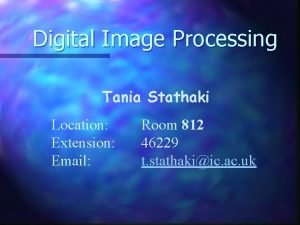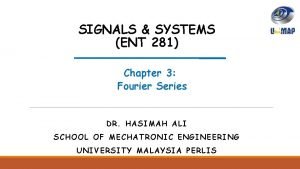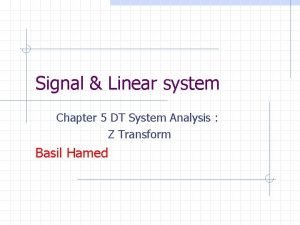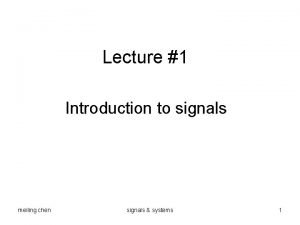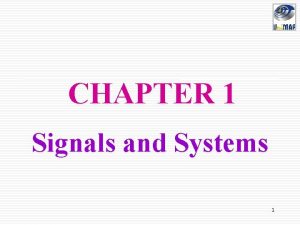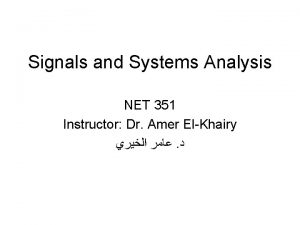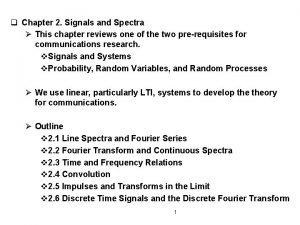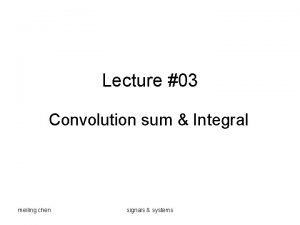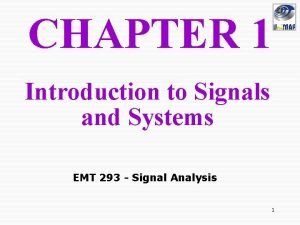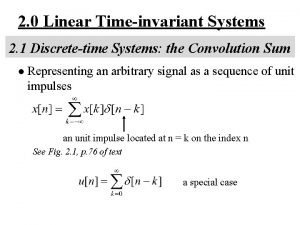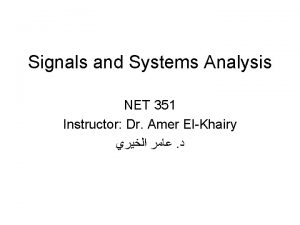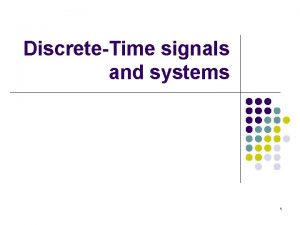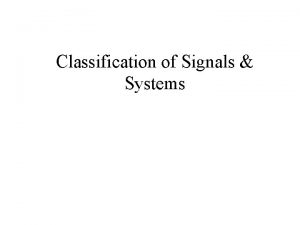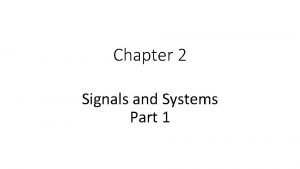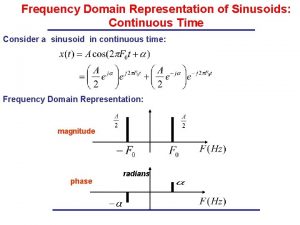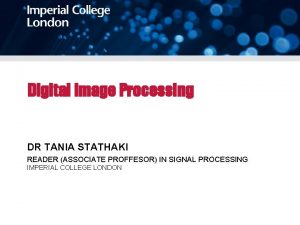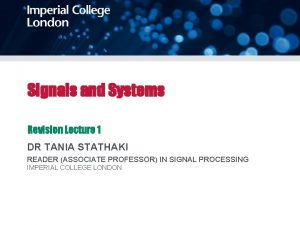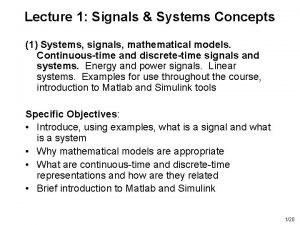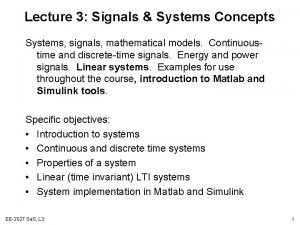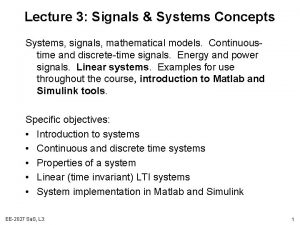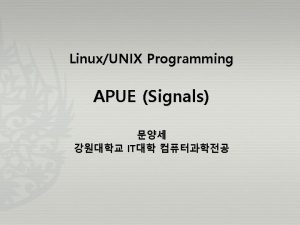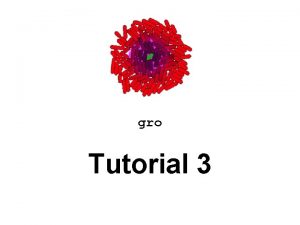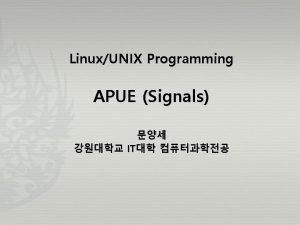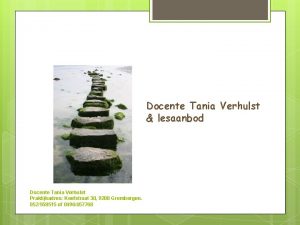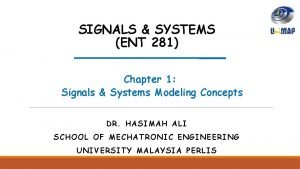Signals and Systems Lecture 3 DR TANIA STATHAKI




















- Slides: 20

Signals and Systems Lecture 3 DR TANIA STATHAKI READER (ASSOCIATE PROFFESOR) IN SIGNAL PROCESSING IMPERIAL COLLEGE LONDON

Zero-input response basics

General solution to the zero-input response equation Substitute into (3. 1)

General solution to the zero-input response equation cont.

General solution to the zero-input response equation cont.

Characteristic polynomial

Example 1

Example 1

Repeated characteristic roots

Example 2

Complex characteristic roots

Example 3

Example 3 cont.

Comments on auxiliary conditions

time

Insights into zero-input behaviour • Assume (a mechanical) system is initially at rest. • If we disturb a system momentarily and then remove the disturbance so that the system goes back to zero-input, the system will not come back to rest instantaneously. • In general, it will go back to rest over a period of time, and only through some special type of motion that is characteristic of the system. • Such response must be sustained without any external source (because the disturbance has been removed). • In fact the system uses a linear combination of the characteristic modes to come back to the rest position while satisfying some boundary (or initial) conditions.

Example 4 The loop current is sustained by the RL circuit on its own without any external input voltage.

Example 5 As previously, the loop current is indefinitely sustained by the LC circuit on its own without any external input voltage.

The resonance behaviour • • Any signal consisting of a system’s characteristic mode is sustained by the system on its own. In other words, the system offers NO obstacle to such signals. It is like asking an alcoholic to be a whisky taster. Driving a system with an input of the form of the characteristic mode will cause resonance behaviour.

Relating to other courses • • • Zero-input response is very important to understanding control systems. However, the 2 nd year Control course will approach the subject from a different point of view. You should also have come across some of these concepts last year in Circuit Analysis course, but not from a “black box” system point of view. Ideas in this lecture is essential for deep understanding of the next two lectures on impulse response and on convolution, both you have touched on in your first year course on Signals and Communications.
 Tania stathaki
Tania stathaki Tania stathaki
Tania stathaki Vodafone cheapest cloud hosting
Vodafone cheapest cloud hosting Communicative signals and informative signals
Communicative signals and informative signals What was the first human language
What was the first human language Communicative signals and informative signals
Communicative signals and informative signals 01:640:244 lecture notes - lecture 15: plat, idah, farad
01:640:244 lecture notes - lecture 15: plat, idah, farad Trigonometric fourier series in signals and systems
Trigonometric fourier series in signals and systems Signals and systems oppenheim solutions chapter 5
Signals and systems oppenheim solutions chapter 5 Shifting and scaling of signals
Shifting and scaling of signals Precedence rule in signals and systems
Precedence rule in signals and systems Convolution sum in signals and systems
Convolution sum in signals and systems Synthesis equation fourier series
Synthesis equation fourier series Convolution sum and convolution integral
Convolution sum and convolution integral Introduction to signals and systems
Introduction to signals and systems Convolution sum in signals and systems
Convolution sum in signals and systems Signals and system
Signals and system Signal and systems
Signal and systems Elementary signal
Elementary signal Signal and systems
Signal and systems Time frequency
Time frequency
